Welcome to our first Frame Quilting Friday! I've made a fun quilting tutorial for you today on how to use the Slice Quilting Ruler to quilt three different quilting designs. Learn how to quilt Bricks, Peaks, and Gridlines using this simple straight edge ruler.
Quick links to the gear shown or mentioned in this quilting tutorial:
- Grace Qnique Longarms
- Basic Ruler Kit
- Slice Quilting Ruler
- Click Here for more Frame Quilting Friday videos
Creative Quilting with the Slice Ruler
There are so many creative things you can do with the Slice ruler! This ruler is an 18 degree wedge and I designed it specifically for ruler foot quilting on your home machine or longarm. You can also use this ruler to cut out wedge shapes to create Dresden Plate quilt blocks and tumblers.
I love using straight edge rulers to help maintain control over where the machine is going. I've had my Grace Qnique machine set up on a longarm frame for almost a year, but I still struggle to make the machine go exactly where I want it to.
Using the rulers helps me control where the longarm machine is moving and to travel stitch cleanly over previously stitched lines. I know I can't do Echo Ditching (tips below) or any of the designs you see in this quilting tutorial without the ruler in my hand.
I'm still working on my tendency to build up thread and hide little mistakes. It's not the end of the world if it's not perfect, Leah! LOL!
How to Quilt Bricks
Let's explore a few fun designs you can create using the Slice Quilting Ruler. The first is a very eye-catching stacking design called Bricks.
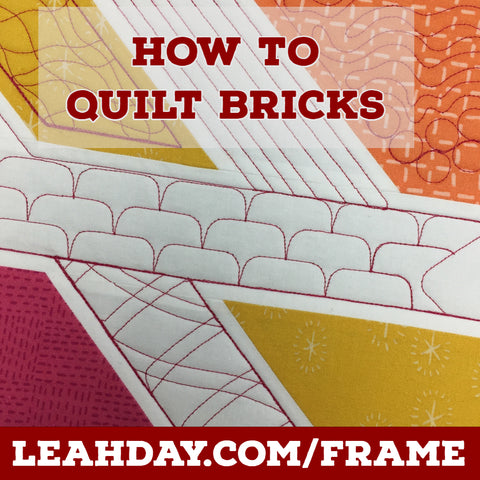
I used the narrow end of the ruler and lined up the etched line on the end with a straight line on the quilt. You can use the seamlines, a previously stitched line, or a marked line as a guide for placing the ruler.
Holding the ruler firmly, I pulled the machine around the end of the ruler and stopped on the opposite side. Then I repositioned the ruler and pulled the machine around again. I always hold the ruler in my non-dominant hand and push the machine with my dominant hand. It can sometimes feel awkward and do be careful when you position the ruler to the front of the foot that it doesn't pop upwards and over the lip of your ruler foot.
The hardest thing about quilting Bricks is dealing with the weird edges that can happen when you fit the design into a strange space. My best advice is just go slow and use a marking pencil if needed to plan how the design works. You can always go back and draw in the lines later too.
How to Quilt Peaks
Peaks is quilted using the pointy tips of the ruler. They are asymmetrical and not as easy to line up perfectly so it's best to use this design in spaces you want to be free form and creative.
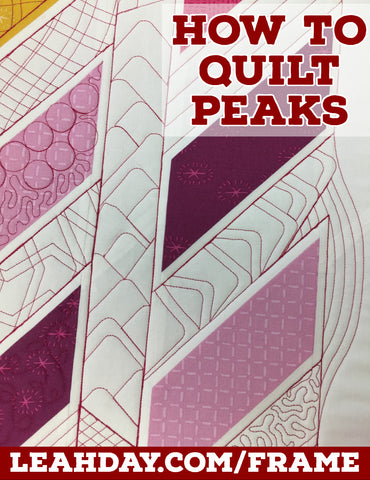
While the tip of the ruler is a sharp point, the ruler foot is rounded so you're always going to have rounded points on your Bricks and Peaks.
How to Quilt Gridlines and Echo Ditching
Of course you can also use the Slice ruler in the simplest way possible - just using the straight lines! There are many fun straight line designs to play with:
- Straight Lines
- Crazy Lines
- Pinstripes
- Gridlines
- Pinstripe Gridlines
- Matrix Maze
- Zigzag Lines
- Psycho Ziggie
I also like using this ruler for Echo Ditching. This is a process of quilting 1/4 inch away from the seamlines of your quilt. This is a great alternative to Stitching in the Ditch because you don't run the risk of hopping out of the ditch and having to rip out stitches that don't look so nice.

Echo ditching is more forgiving and it's fast because all you have to do is line up the edge of the ruler with the edge of your seamline and pull the machine around.
Keep in mind that all of the designs I shared with you today will also work on a home sewing machine with a ruler foot as well. The difference is instead of moving the machine, you will be moving the quilt and the ruler at the same time.
Just like on a longarm, make sure you put something grippy on the back of your ruler like True Grips so it doesn't slip out of position as you move the machine or quilt. The only dangerous thing that can happen when ruler foot quilting is the ruler somehow slip over or under the ruler foot and hit your needle.
Be mindful of this as you're experimenting with ruler foot quilting and make sure to keep a firm, comfortable grip on the ruler at all times.
I hope you enjoyed our first Frame Quilting Friday! Be looking for something fun next week as we explore quilting on a longarm frame.
Let's go quilt,
Leah Day
P.S - Please share the photos and video from this post with your friends on Pinterest, Facebook, and Instagram! The more the merrier!



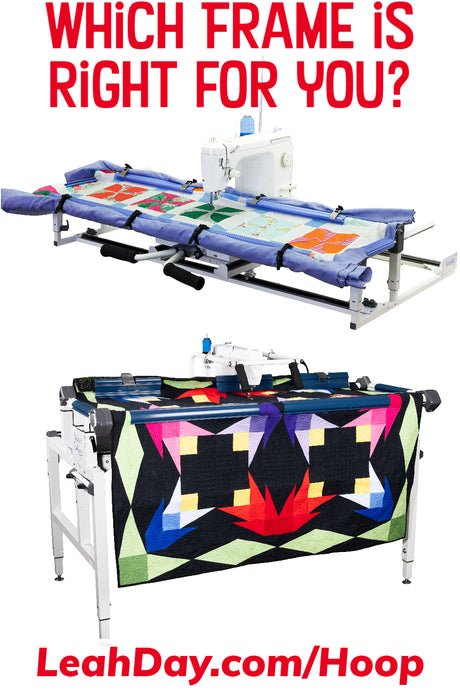
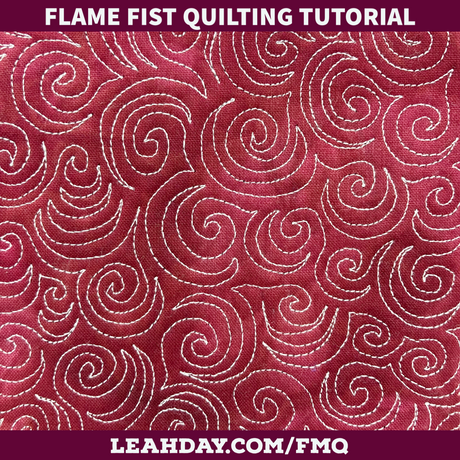
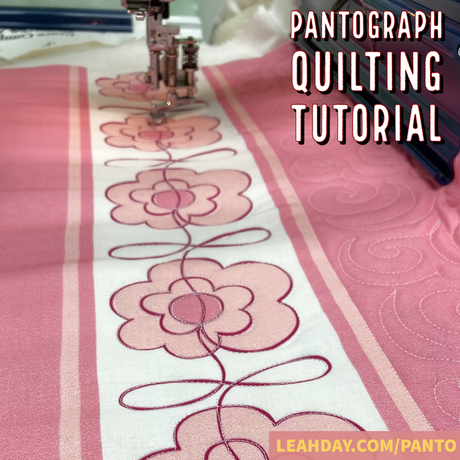
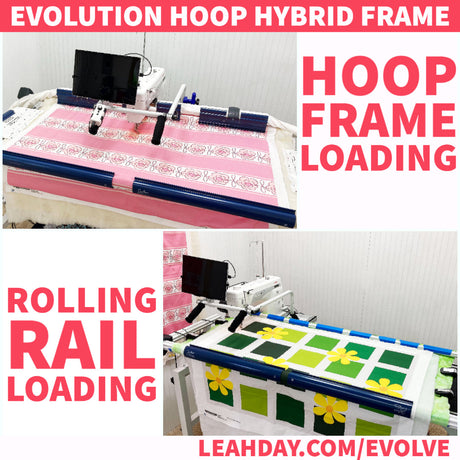
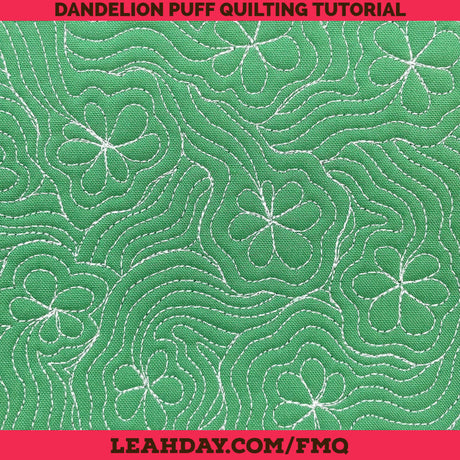
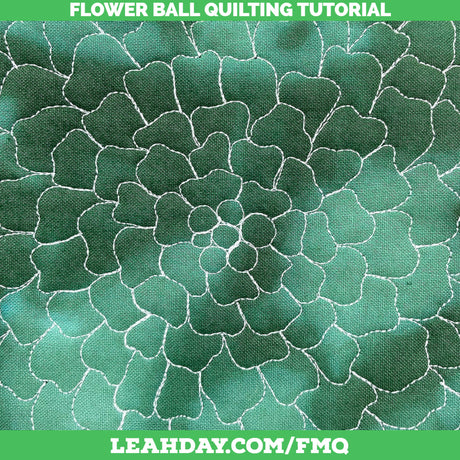
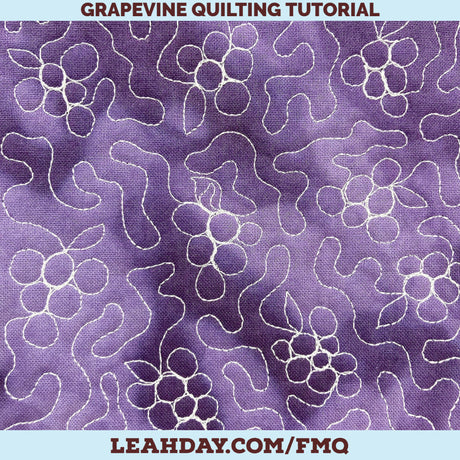
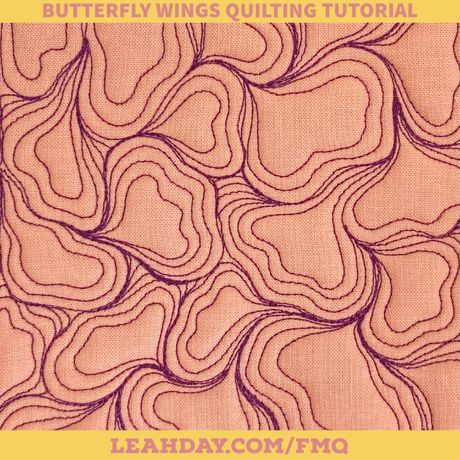
2 comments
Congratulations on your Qnique! The channel locks are a part included with the Grace Continuum Frame. Did you purchase a Continuum? If not, you can order this part separately. You will need to take the top rail off your frame and remove the machine from the table and flip it to attach the channel lock to the back right wheel. It’s a bit of an ordeal, but 100% worth it!
If you have any extra pieces from your frame, check the box. It’s easy to skip adding the channel locks because there are so many pieces to attach in that area. I almost skipped it, but I’m so glad I didn’t – I use that almost every day!
I have owned a qnique 15 since December. Prior to that I was quilting on my juki tl2010q. I watched your video on how to load a quilt as I thought maybe I was doing it incorrectly because sometimes the quilt seems to be a little wonky. I have not been using a channel lock when first setting up. What is it you have put on the machine to make it lock?